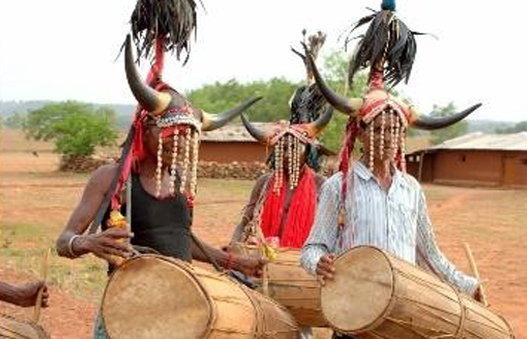
MY LANGUAGE MATTERS TO GOD!
Adapted from IEM Outreach
A brief look at the painstaking effort that goes into translating the Bible in indigenous languages and the beauty revealed when the nuances are got right. 2019 is the year of Indigenous Languages!
India is home to hundreds of indigenous languages spoken in the world today.
It’s interesting to see an army of national Bible translators engaged in giving God’s Holy Word in many of these languages. All these languages are not in the written form. So, before giving the Word, many of these indigenous languages need to get a written avatar! Giving a language a written form involves the voluminous task of understanding the phones (in linguistics, a phone is any distinct speech sound or gesture, regardless of whether the exact sound is critical to the meaning of words) in a particular language, its complex grammar pattern, and the beautiful semantic structures. Somebody has aptly described the work as 99% perspiration and 1% inspiration. To give the life-transforming Word of God is a journey in itself, and every translator is thankful to God for this great privilege that God has shared with them. From finalizing the phonology to grammar to giving orthography, and from translating every verse to printing, several partner agencies get involved in this magnificent task.
One of the biggest misconceptions is the belief that the so-called primitive languages are inadequate as a means of communication. Some people believe that primitive languages cannot have well-defined or comprehensive grammar.1 Dig into any one of these languages, you will see the misconceptions vanish! Instead, you will only marvel at the way each sound is knit together in perfect harmony and clarity. The more you get into the understanding of these languages, the more you wonder how unique every language is and how great is the God whom we worship, the God of these Languages. Can mortals describe His brilliance?
When the recipient language does not have enough vocabulary to translate all the Biblical terms, (most of our languages face that problem!) what do you do? You either borrow an appropriate term from the Language of the State where the language area is located or coin a new phrase or word from the recipient language itself, as allowed by Translation Principles in the given context. The words used should not only convey the right meaning to the hearer but also should fall well within its language structure! Every decision needs careful consideration and investigation. The learned and experienced consultants and the literate/non-literate mother-tongue speakers play a vital role in these deliberations. Below is the presentation of a few Biblical words as handled by translators of a few of the languages in which the Indian Evangelical Mission (IEM) is working.
Word: Prophecy & Prophet
Language: Rana Tharu
State: Uttar Pradesh, Uttarakhand & In Nepal, Kanchanpur and Kailali districts
Prophecy means an utterance inspired by God, inspired utterance, the capacity or ability to utter inspired messages. (Greek word is ‘prophjteia)
Rana Tharu people basically are worshippers of spirits (Animists). They have the practice of seeking counsel from people who by ‘divination’ or ‘inspiration’ tell ‘inspired messages’ to help solve their problems. The challenge for the translator is though the language has words to express ‘saying by divination’ or ‘inspired messages’, we cannot use those words, as the source of inspiration in their case is ‘spirits’ of deity or of dead people. The use of those words will invoke wrong association in the reader’s mind and would contradict the intended meaning.
So in Rana Tharu for Prophecy, we coined a rendering “God’s message.saying” [message (which) God says].
Also, for Prophet (Greek word is ‘prophjtou’), there is a general tendency to think prophet as ‘one who foretells the future’. This was only one of the aspects of prophet’s function. In New Testament times, the focus was upon the inspired utterance proclaimed on behalf of and on the authority of God. Accordingly, we coined a rendering “God’s message.speaker” [one who speaks/says God’s message] for prophet. In that way the Rana Tharu words for Prophecy and Prophet not only have the language structure match, but also conveys the right meaning!
– Gnanasekhar & Sheeba
[The New Testament Translation in Rana Tharu is almost complete. It will be released soon.]
Word: Synagogue

Language: Bison Horn Madiya
Language Area: Chhattisgarh
Synagogue is a completely Jewish concept. In Bible Translation, it is very difficult to find an equivalent term to translate this word in any language. In the Greek, it is ‘sunagogas’. The English language has chosen to retain the greek word with some changes in the sounds as ‘Synagogue’. It doesn’t tell us the meaning. Now, how do we translate it so that the Madiya people can understand it?
A thorough study of this word showed that during the New Testament times, it was a place where Jewish people assembled to pray to God, to read the Scriptures or to hold their local courts. So, basically, Synagogue was a building where the Jews assembled for religious and legal activities.
But in the Bison Horn Madiya Language, there is no word for ‘building!’ The Madiyas live in the forest. The word for ‘house’ is used to mean ‘a place’ or ‘a building’. For example, inside the house, the kitchen is referred to as the ‘çooking-house’- a place of cooking; the store room where the harvested rice grain is kept, as the ‘seed house’. And the village school as the ‘school-house’. So, to translate ‘Synagogue’ we followed the Madiya style; we used the word ‘house’- ‘the house where the Jews assembled’. So, in Madiya, we have used a group of words to translate this one Greek word.
– Joseph & Omana
[The New Testament in Bison Horn Madiya was completed in 2010. Translation of the Old Testament is in process.]
Word: Sabbat
Language: Ho
Language area: Odisha, Jharkhand, West Bengal & Assam
Before starting the translation, we made a list of key terms which have significance in the Jewish history. Sabbath was one of them. As the word suggests, at first we decided to use the word “jirawn din” which means “rest day” in the Ho language, though we knew that the word ‘Sabbat’ has a deeper meaning than just refraining from work. Later, as we advanced in the Translation of the Ho New Testament, we decided that the new believers from the Ho community have to learn the important Biblical terms and their meaning in a deeper way.
But if we coin a word which explains the whole meaning of ‘Sabbat’, it would be a long phrase and it would affect the easy flow of reading. The term occurs 184 times in the whole Bible and in the New Testament alone it occurs 68 times. So, it was necessary that we keep the term as short as possible, easy to read, while retaining the original meaning. We also wanted the Ho believers to be familiar with the original Hebrew term. So, after consulting the mother tongue Translators we decided to make it “sabbath jirawn din” which means “Sabbath rest day”.
When we printed the Ho New Testament, we made a glossary of those key Biblical terms and explained their meaning and cultural significance in detail along with Biblical references. This helped the Ho believers understand those terms in depth and also the historical background of the cultural terms.
– John & Elizabeth
[The invitation to work among the HO was given by Bro. Graham Staines. The New Testament in this language was completed and released in March 2019]
Word: God
Language name: Puroik
State: Arunachal Pradesh
How can a Bible translator translate the Bible without having the word ‘God’?
The Puroik language speaking people group living in Arunachal Pradesh have been using borrowed word for God as Ishwar and Parmeshwar in their prayer and Christian activities. They have several names for spirits and demons but they did not have the word for the real God.
So, after long discussions with the mother tongue speakers and language consultants, we coined a word, ‘Peubo’, which means maker or creator. Just like the English usage of God and god, we use upper case “Pëübo” to refer Maker or Creator – to represent the true living God of the Bible and the lower case “pëübo” to refer other gods.
-Vicky Sema & Rebika.
[The ministry among the Purioks is a very pioneering one. Few of the NT books are translated.]
A quote of Dr. G. Campbell Morgan is worth mentioning, “The History of missions shows that the success or failure of missions has always been dependent on whether those brought to Christ had the Scriptures in their own language or not.” How true!
[The Indian Evangelical Mission is one of the pioneers to engage in the ministry of Bible Translation in our country. The New Testament has been translated into almost ten indigenous languages and the work is going on in many languages. Each of this word study was published first in the OUTREACH, the official organ of the IEM. All the contributors are IEM missionaries.]
1.‘No language is without Grammar’, Dr. Selvi, Outreach September 1998.


